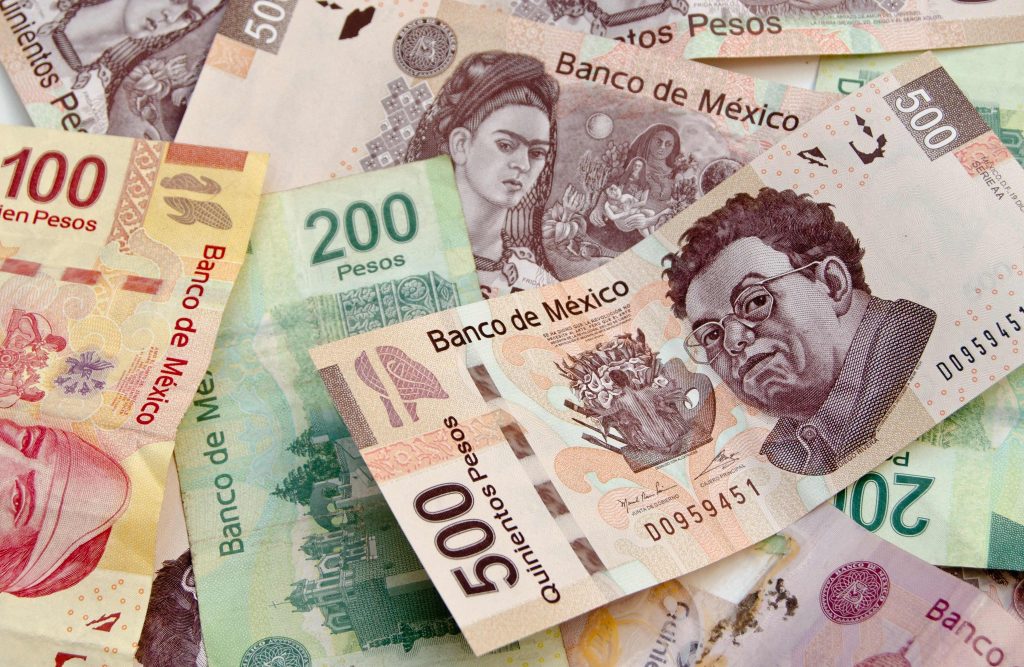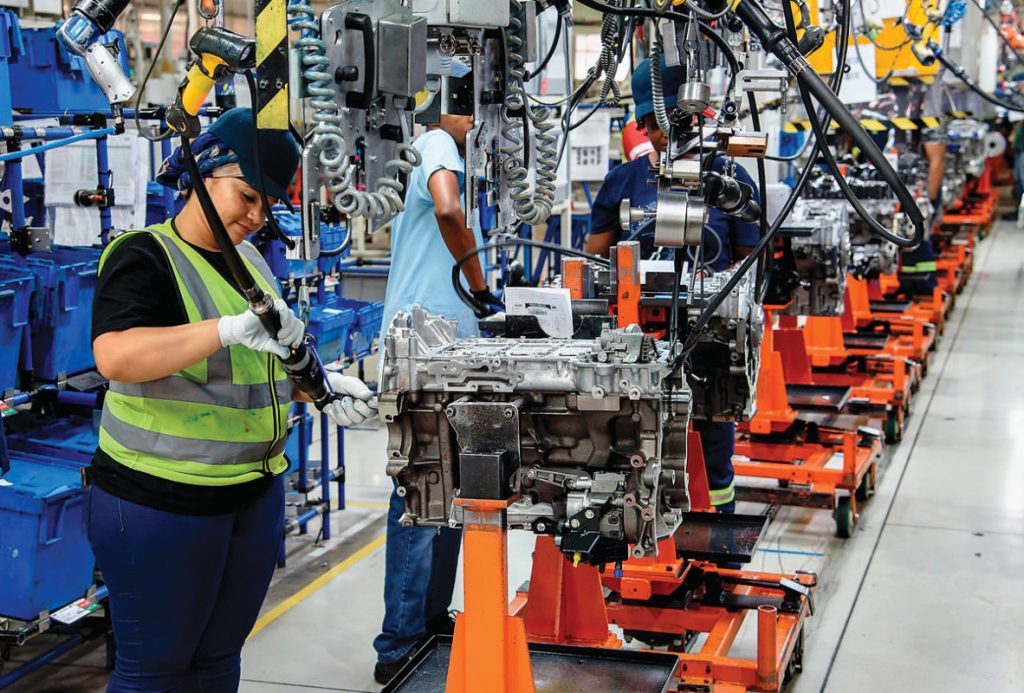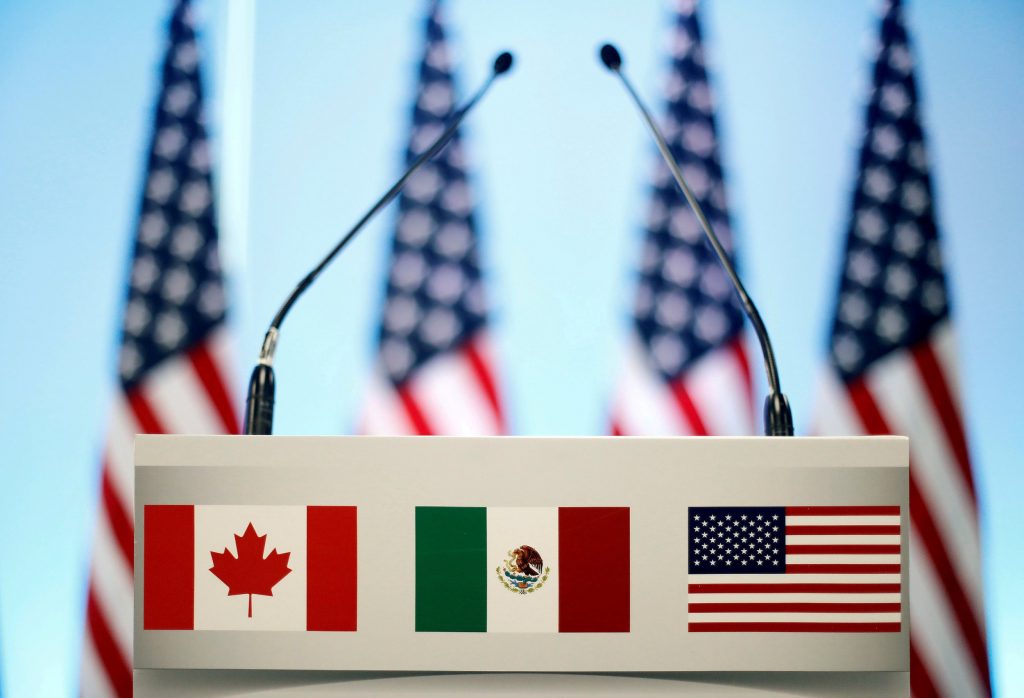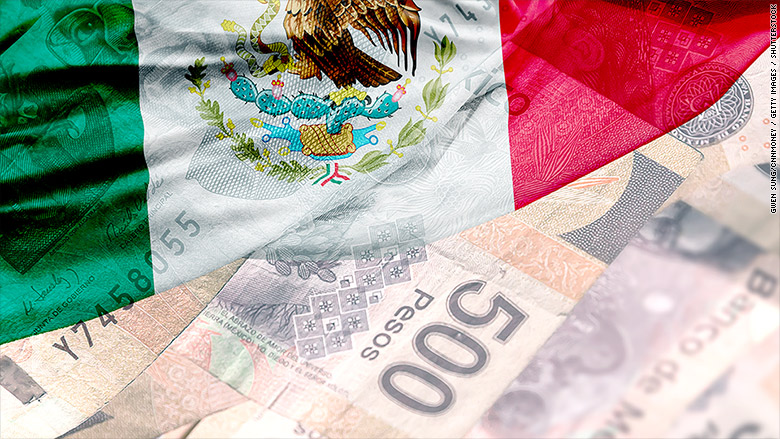Mexico’s economy: leading industries, GDP and wealth levels
Mexico, like many other countries, faces various economic challenges and prospects that affect the lives of its citizens and global market dynamics. The Mexican economy is currently going through a challenging period due to various factors, including global economic trends, domestic political developments and changes in trade relations with key partners.
One of the main elements of the Mexican economy is its strategic position in North America. Mexico has a long history of trade relations with the United States and Canada, having been part of free trade agreements such as the North American Free Trade Agreement (NAFTA) and its subsequent version, the North American Free Trade Agreement (USMCA). These agreements play a key role in Mexico’s economic integration into the global economy and provide it with access to major consumption and investment markets.
However, despite its importance in the regional and global economy, Mexico also faces a number of internal challenges that limit its potential for growth and development. Issues of corruption, low levels of investment in human capital, including education and health, and high levels of poverty and inequality are all challenges currently facing the Mexican economy.
Nevertheless, despite these challenges, Mexico continues to play a significant role in the global economy due to its potential and resources. Its geographic location, vast natural resources, diverse economy, and labor potential make it an important player on the world stage.
General characteristics of the Mexican economy

Mexico is a large economy that is an important player on the world stage. To understand its status and trends, let’s look at the main macroeconomic indicators.
- Gross Domestic Product (GDP): GDP is a key indicator of a country’s economic activity. In 2021, Mexico’s GDP was about US$1.3 trillion, making it the second largest economy in Latin America after Brazil. The primary driver of Mexico’s economy is manufacturing, including automobiles, electronics, food processing, and other sectors.
- Inflation: Inflation is an increase in the price level of goods and services in a country. In 2021, inflation in Mexico was about 6.5%, which is quite high. High inflation can have a negative impact on the purchasing power of the population and worsen the overall economic situation.
- Unemployment: The unemployment rate is a measure of the number of people who are unemployed but actively looking for work. In 2021, Mexico’s unemployment rate was about 4.8%. Despite the relatively low rate, there is still a large segment of the population that faces unemployment and low wages.
- Mexican Peso in the World Monetary System: The Mexican Peso (MXN) is the official currency of Mexico and plays an important role in the world monetary system. It is closely tied to the U.S. dollar, and the exchange rate between the peso and the dollar is often used to assess Mexico’s financial stability and its overall economic situation. In addition, the Mexican peso is one of the most actively traded currencies in the world, making it an important financial instrument in world markets.
Leading sectors of the economy

The leading sectors of the Mexican economy play a key role in generating its GDP and economic growth. Let’s take a look at the major industries that contribute most to Mexico’s economy and their impact on foreign trade.
Automotive industry:
Mexico is one of the largest automakers in the world and home to many of the world’s automobile companies. It is home to factories of giants such as General Motors, Ford, Volkswagen, Nissan, and Toyota. Mexico’s automotive industry makes up a significant part of its economy, contributing about 3% of the country’s GDP. More than 80% of the cars produced in Mexico are exported, making this sector an important source of foreign exchange earnings.
Electronics:
The electronics sector is one of the most dynamic and fastest growing sectors in Mexico’s economy. Large international companies such as Samsung, LG Electronics, Foxconn and Intel have manufacturing bases in Mexico. This sector specializes in the production of computers, phones, televisions and other electronics, making it a key export sector. Mexico’s electronics industry contributes about 2% to the country’s total GDP. Most major electronics manufacturers have production bases in Mexico, which creates jobs and attracts foreign investment.
Food Industry:
Mexico is known for its diverse and delicious culinary heritage. The country’s food industry produces a wide range of products including fruits, vegetables, meat, milk and dairy products, beverages, and more. Mexico’s food industry contributes approximately 4% to the country’s total GDP. Agricultural exports are an important source of income and Mexico is a major supplier of fruits, vegetables and other products to the world market.
Tourism:
Tourism contributes significantly to Mexico’s economy, accounting for about 8% of its GDP. More than 40 million tourists visit Mexico every year, making tourism a key sector of the country’s economy. The country offers a variety of beaches, cultural attractions, historical sites, and scenic natural landscapes. Tourism contributes to job creation, small business development, and foreign exchange earnings.
Oil and Gas Industry:
Mexico has significant oil and natural gas reserves, and the oil and gas industry contributes about 7% to the country’s GDP. In addition to domestic consumption, Mexico is one of the largest oil producers in the world and an important supplier of oil to the global market, and as a result, energy exports also generate significant revenue for the country.
Telecommunications:
Mexico’s telecommunications sector has shown rapid growth in recent decades. Major telecommunication companies such as Telmex, Telcel and AT&T Mexico provide a wide range of communication services including mobile, internet and television. Mexico’s telecommunications sector contributes approximately 3% to the country’s total GDP. With the development of mobile communications and the internet, this sector continues to show steady growth and attract new investments.
These industries play an important role in Mexico’s economic development and contribute to its growth and prosperity. With a variety of export-oriented sectors, Mexico has a stable economic growth and an important place on the world stage.
Economic transformations and reforms

In Mexico’s long history, economic transformation and reform have played a key role in shaping its current economic structure and position on the world stage. From the period following the 1910 revolution to the present day, the country has experienced several significant phases of change that have shaped its economic profile and impacted the lives of millions of Mexicans.
- Period of Industrialization: During the 1920s and 1930s, Mexico faced industrialization designed to accelerate the country’s development. This period included building infrastructure, developing heavy industry, and expanding the production of goods for the domestic market.
- Import Substitution Period: During the 1940s and 60s, Mexico applied an import substitution policy to limit imports and promote local production. This strategy stimulated industrial growth but also led to high costs and dependence on government subsidies.
- Structural Reform Period: In the 1980s, Mexico faced a debt crisis, which forced Mexico to implement structural reforms. These included trade liberalization, privatization of state-owned enterprises, and reduced government intervention in the economy.
- North American Free Trade Agreement (NAFTA): In 1994, Mexico joined NAFTA, which opened up free trade with the United States and Canada. This agreement has significantly affected the country’s economic structure by stimulating exports and attracting foreign investment.
- Contemporary Reforms: In recent decades, Mexico has undertaken a number of reforms to improve economic competitiveness and attract investment. This includes liberalizing the financial and energy sectors, improving the business climate, and reducing bureaucratic barriers.
These periods of transformation and reform have significantly impacted Mexico’s economic development. As a result, the country has become a major economic player in the region, increasing its export base, attracting foreign investment, and reducing poverty. However, despite significant successes, economic challenges such as income inequality and corruption remain relevant in today’s Mexico.
Welfare and social aspects

Welfare and social development issues in Mexico play an important role in shaping the country’s society and economy. Despite some achievements in this area, Mexico continues to face challenges of inequality, poverty and access to social services.
Standard of Living:
The standard of living in Mexico varies by region and social status. In urban areas such as Mexico City and Monterrey, average income levels can be significantly higher than in rural areas. However, even in large cities there is a problem of income inequality, where a small percentage of the population controls most of the wealth.
Education:
The education system in Mexico includes both public and private schools. Despite government efforts in education, access to quality education remains a challenge for many Mexicans, especially in rural areas. This can lead to unequal opportunities and limit potential prospects for young people.
Health:
Mexico’s health care system includes both public and private health care facilities. Despite this, access to quality health services remains uneven. Many Mexicans, especially those living in rural areas or on the outskirts of cities, face limited access to health services and medicines.
Issues of Inequality and Poverty:
Inequality remains a significant problem in Mexico, with an unequal distribution of wealth and opportunity. Poverty remains a serious problem, especially among rural populations and indigenous peoples such as Amerindians. These groups often face limited opportunities for social mobility and access to resources.
Overall, social aspects in Mexico continue to pose serious challenges for the government and society as a whole. Improving living standards, ensuring access to quality education and health care, and combating inequality and poverty remain priorities for the country.
Economic challenges and prospects

Mexico, as a major emerging economy, faces a number of economic challenges that affect its development and prosperity. In this section, we examine the main challenges as well as the country’s development prospects in the context of global trends.
The main economic challenges are:
- Low Productivity: One of the main challenges for the Mexican economy is low labor productivity. Despite significant GDP growth in recent decades, productivity remains lower than in developed countries. This can be attributed to insufficient investment in education, infrastructure and innovation.
- Inequality and Poverty: Income inequality and poverty remain major challenges for the Mexican economy. Despite a growing economy, many citizens remain on the brink of poverty, especially in rural areas and among indigenous peoples. The unequal distribution of wealth and opportunity undermines social stability and economic growth.
- Corruption and Bureaucracy: Corruption and bureaucracy are serious obstacles to business and investment in Mexico. Opaque and complex administrative procedures can impede business development and job creation.
- Trade imbalances: Mexico faces trade imbalances, especially with the United States, its largest trading partner. Despite significant exports to the United States, the country also depends on imports of goods and services, which can create pressure on the balance of payments and the exchange rate.
Development prospects:
- Economic Diversification: An important prospect for Mexico is to diversify its economy by developing new industries such as information technology, automotive, and green energy. This will reduce dependence on oil revenues and increase the sustainability of the economy.
- Infrastructure investment: Infrastructure investment plays an important role in stimulating economic growth and increasing productivity. Developing the transportation network, energy and communications can help attract investment and create new jobs.
- Anti-corruption: Reforms aimed at combating corruption and increasing transparency in public administration can help improve the investment climate and stimulate economic growth.
- Integration into the global economy: Deeper economic integration with other countries, especially through existing trade agreements and the creation of new partnerships, can open up new export and investment opportunities.
Overall, despite the current challenges, Mexico has the potential for sustainable economic development with the right reform and investment strategy.
Conclusion

The article on the Mexican economy concludes with a number of key conclusions based on the information presented.
First, despite the complexities and challenges facing the Mexican economy, the country has significant potential for development due to its geographic location, natural resources and diversity of industrial sectors. Particularly important is the sustained GDP growth and economic diversification that contribute to the country’s position on the world stage.
Second, Mexico plays a significant role in the global economy. The country is the largest economic partner of the United States and one of the leading producers of automobiles, electronics, food products, and other goods for the global market. Its participation in numerous international organizations and trade agreements makes it a key player on the global stage.
Third, Mexico’s future development depends on the successful implementation of reforms and investments in key sectors. It is important to continue to modernize the economy, develop infrastructure, improve education and health care, and improve the business climate to attract foreign investment.
Finally, in the context of all of the above, moving to Mexico may present an attractive prospect for those seeking new life and business opportunities. Mexico offers ample opportunity for growth and prosperity, and working with a moving company that organizes the move and provides professional assistance in the process can be key to a successful start in a new country.
In summary, Mexico remains an important player on the world stage and has the potential for further economic development. With the right strategies and efforts, it can continue to strengthen its position and attract new investors and residents willing to take advantage of the opportunities this beautiful and diverse region offers.
Contact us in any way:
Telephone: (954) 773-9667
E-mail: abs@absoluteinc.org





